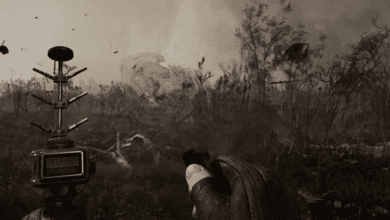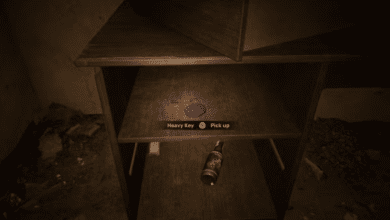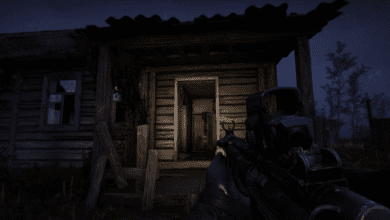The Brutalist Movie Review: A Dark Exploration of the American Dream by Brady Corbet
When it comes to capturing the complex layers of the American dream, few films do it as boldly as “The Brutalist” by Brady Corbet. This 3-hour-and-35-minute epic takes viewers on a profound journey, peeling back the glossy surface of America’s ideals to reveal the darker truths lurking beneath. With an unforgettable performance by Adrien Brody, this film isn’t just another period drama—it’s a masterful deconstruction of the myths that shape our understanding of America.
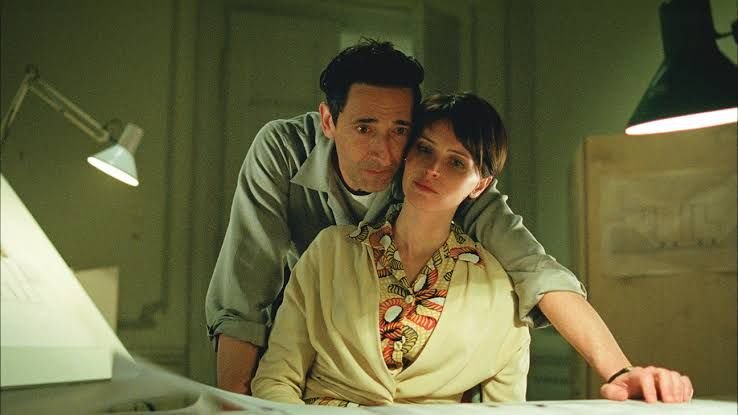
A New Vision for Brady Corbet
Brady Corbet has always been known for his daring choices in filmmaking, but “The Brutalist” marks a new chapter in his career. Corbet, who has often captured the attention of niche audiences, steps into the mainstream spotlight with this film. It’s a bold move, one that seems destined to change his trajectory as a filmmaker. The film’s scope is vast, its themes are provocative, and its execution is nothing short of audacious.
The story begins in the immediate aftermath of World War II, following László Toth, a Hungarian architect portrayed by Adrien Brody. László arrives in the United States with hopes of a fresh start, awaiting the arrival of his wife Erzsébet (Felicity Jones) and their niece Zsofia (Raffey Cassidy) from Hungary. His journey is fraught with challenges as he navigates a new country, staying first with a distant cousin before securing a commission from an eccentric millionaire (played by a remarkable Guy Pearce) to design a community center in Pennsylvania. Yet, the opportunities that come László’s way are fragile, given on a whim, and just as easily taken away. Despite his best efforts to contribute to American society, he and his family remain outsiders, always on the periphery, always the first to be blamed when things go awry.
Unveiling the Dark Side of the American Dream
“The Brutalist” is not your typical Hollywood film. Its runtime is daunting—a good hour longer than what most audiences consider long. But every minute serves a purpose. Corbet doesn’t waste a second. The film is cleverly paced, and the inclusion of an intermission is a stroke of genius. It provides a much-needed pause, allowing the audience to process the heavy themes being explored.
The movie is cleverly divided into two parts. The first half is filled with hope and optimism, reflecting László’s efforts to build a meaningful life in his new homeland. The second half, however, sees that optimism crumble. Despite the initial warm welcome, it becomes clear that the help offered to László and his family is conditional, extended only as long as it suits the benefactors. American generosity, the film suggests, is plentiful but fleeting—a sentiment that László experiences firsthand as his dreams begin to turn to dust. Throughout the film, newsreel footage of a prospering America is juxtaposed against the disillusionment felt by László and Erzsébet, painting a stark contrast between the country’s promises and its realities.
A Bold Stylistic Approach
Corbet’s direction in “The Brutalist” is both unique and compelling. He takes viewers down a path rarely tread in modern cinema, choosing to present a version of America that is distorted, almost nightmarish. The film’s visuals are striking—a twisted version of Americana seen through a funhouse mirror. This is exemplified in a scene where the Statue of Liberty, an enduring symbol of freedom, is depicted upside down, symbolizing the inversion of American ideals.
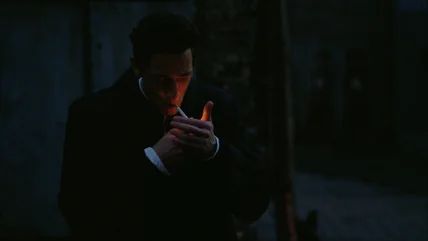
The film’s stylistic choices, from its cinematography to its haunting score, work together to create an atmosphere that is both unsettling and deeply engaging. Corbet’s willingness to take risks pays off, making “The Brutalist” his most successful film to date.
Adrien Brody’s Career-Defining Role
But the film’s brilliance is not solely due to Corbet’s direction. At the heart of “The Brutalist” is Adrien Brody’s stunning performance as László. Brody brings a complexity to the role that is both captivating and heartbreaking. László is a man driven by his desire to create, yet haunted by his past. He is both charming and obstinate, ambitious and apathetic, humble and arrogant. Brody masterfully navigates these contradictions, delivering what is arguably the best performance of his career.
Felicity Jones, as Erzsébet, complements Brody perfectly. Despite her character’s physical frailty, the result of severe malnutrition during the war, Erzsébet is the emotional anchor of the story. Her strength, both moral and intellectual, provides a counterbalance to László’s turmoil, and together, they form a poignant portrait of a couple struggling to find their place in a world that continually pushes them to the margins.
A Film That Challenges and Rewards
“The Brutalist” is not for everyone. Its themes are heavy, its pacing is deliberate, and its length is considerable. But for those willing to engage with its complexities, the film offers a deeply rewarding experience. It’s a bold examination of 1950s America, a time characterized by both immense prosperity and profound insecurity. Corbet’s vision is clear, and his execution is flawless, resulting in a film that will likely leave a lasting impact on viewers and the landscape of American cinema.
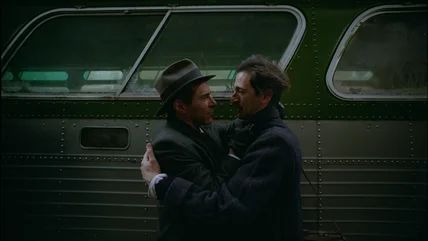
Premiering at the Venice Film Festival, “The Brutalist” is currently seeking U.S. distribution. It’s a film that demands to be seen, not only for its stunning performances and bold direction but also for its willingness to challenge the very foundations of the American narrative. For those who seek a deeper, more nuanced portrayal of the American dream, “The Brutalist” is a must-watch.
In the end, “The Brutalist” is more than just a film—it’s a reflection on the complexities of identity, belonging, and the elusive nature of the American dream.


